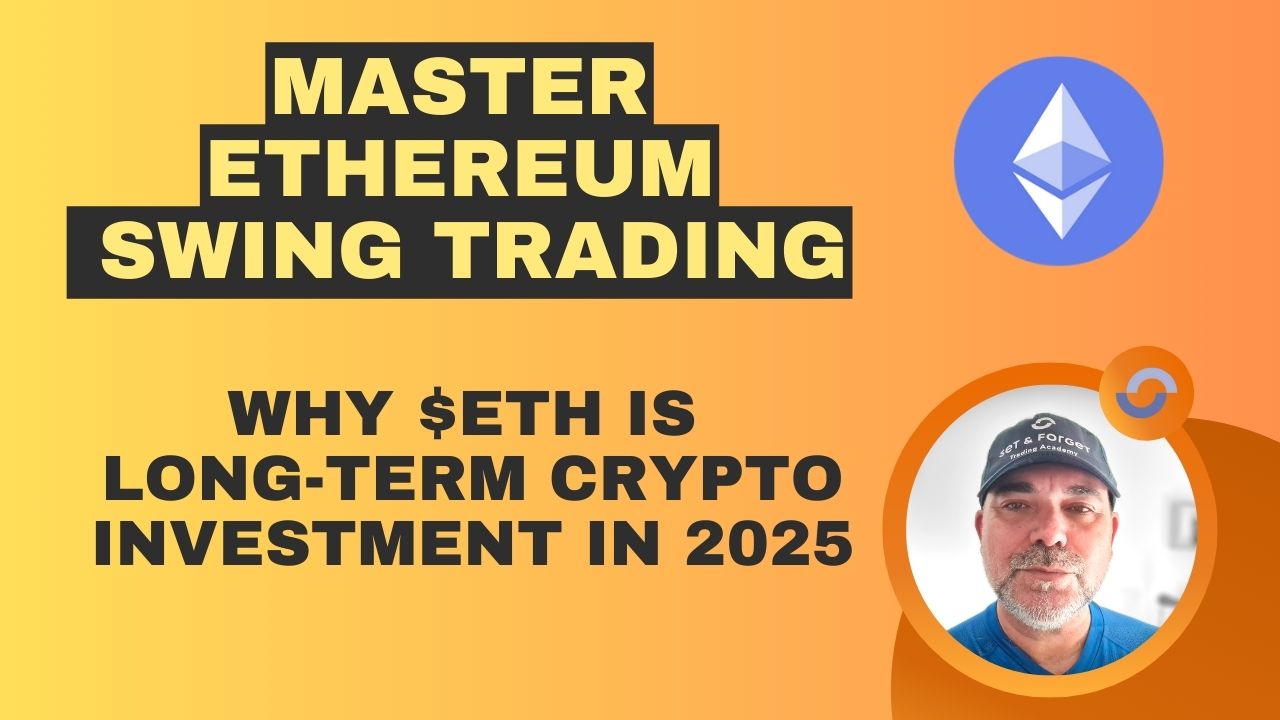20 Nov

Welcome to the exciting world of Ethereum swing trading! As we step into the last part of 2024 and into 2025, the landscape of cryptocurrency investing is evolving faster than ever, presenting both challenges and golden opportunities for savvy traders. If you’ve ever dreamed of turning market volatility into your advantage or have struggled with the ups and downs of crypto investments, you’re not alone. But fear not—swing trading could be your secret weapon! In this blog post, we’ll unravel the art and science behind mastering Ethereum swing trading, equipping you with the strategies and insights needed to navigate this dynamic market successfully. Get ready to harness price fluctuations like a pro while laying a solid foundation for long-term profits. Whether you’re a seasoned investor or just starting out on your crypto journey, join me as we explore how smart swing trading can lead you toward financial success in 2024 and beyond!
Introduction to Ethereum and Swing Trading
Ethereum has carved out a significant niche in the cryptocurrency landscape. It’s not just another digital asset; it’s a powerhouse of innovation, enabling smart contracts and decentralized applications. As its popularity soar, savvy investors increasingly seek ways to navigate this complex market. One approach gaining traction is swing trading.
Swing trading offers an exciting opportunity for those who want to capitalize on short-term price movements while holding onto their investments for longer periods. Imagine riding the highs and lows of Ethereum’s volatility without getting swept away by daily fluctuations.
In 2024, with new developments on the horizon and shifting market dynamics, mastering swing trading could be your ticket to unlocking profitable long-term investments in Ethereum. Whether you’re a seasoned trader or just starting your journey into crypto, understanding how to swing trade effectively can open doors you never thought possible. Let’s dive deeper into the world of Ethereum and explore how you can turn these insights into substantial gains.
Watch the Ethereum $ETH video analysis below.
Understanding the Basics of Ethereum
Ethereum is more than just a cryptocurrency; it’s a decentralized platform that facilitates smart contracts and decentralized applications (dApps). Founded by Vitalik Buterin in 2015, Ethereum allows developers to create their tokens and execute complex programmable transactions.
At its core, Ethereum operates on blockchain technology. This means every transaction is recorded securely and transparently. Unlike Bitcoin, which primarily serves as digital money, Ethereum’s versatility allows various use cases. Ether (ETH) is the native currency of this ecosystem. It fuels operations within the network, allowing users to pay for computational services or transact with each other directly.
The rise of non-fungible tokens (NFTs) has further propelled Ethereum into the spotlight. Its tokenisation support has transformed the art, gaming, and real estate industries. Understanding these fundamentals sets the stage for successful trading in this dynamic market.
What is Swing Trading, and Why is it Beneficial for Ethereum?
Swing trading is a strategy that capitalizes on the market’s short- to medium-term price movements. Traders typically hold positions from a few days to several weeks, aiming to profit from Ethereum price fluctuations.
This method can be particularly advantageous for Ethereum due to its volatility. The cryptocurrency market often sees rapid price shifts, creating opportunities for traders willing to engage actively.
Swing trading allows more flexibility than day trading, which requires constant monitoring and quick decisions. Traders can analyze charts and trends at their own pace before deciding when to enter or exit a position.
Additionally, this approach encourages disciplined risk management strategies. By focusing on broader market swings rather than minute-to-minute changes, traders may reduce emotional stress and avoid impulsive moves driven by fear or greed. This makes swing trading an appealing option for new and experienced investors looking at Ethereum.
The Current State of Ethereum: Analysis and Predictions for 2024 and 2025
Ethereum has shown remarkable resilience in the ever-evolving crypto landscape. As of late 2024, it remains a key player, driven by ongoing developments and updates within its ecosystem. The transition to Ethereum 2.0 has significantly enhanced scalability and energy efficiency, attracting new users and investors.
Analysts expect Ethereum’s price to experience volatility as market conditions shift throughout 2024 and 2025. Factors like regulatory changes, technological advancements, and competition from other blockchain networks will be critical in determining its trajectory.
DeFi projects continue to thrive on the Ethereum network, solidifying its position as a leading platform for developers. This growth could stimulate further investment interest. As we look ahead, community sentiment appears cautiously optimistic. Innovations such as layer-2 solutions may unlock additional potential for growth while addressing existing limitations within the network infrastructure.








